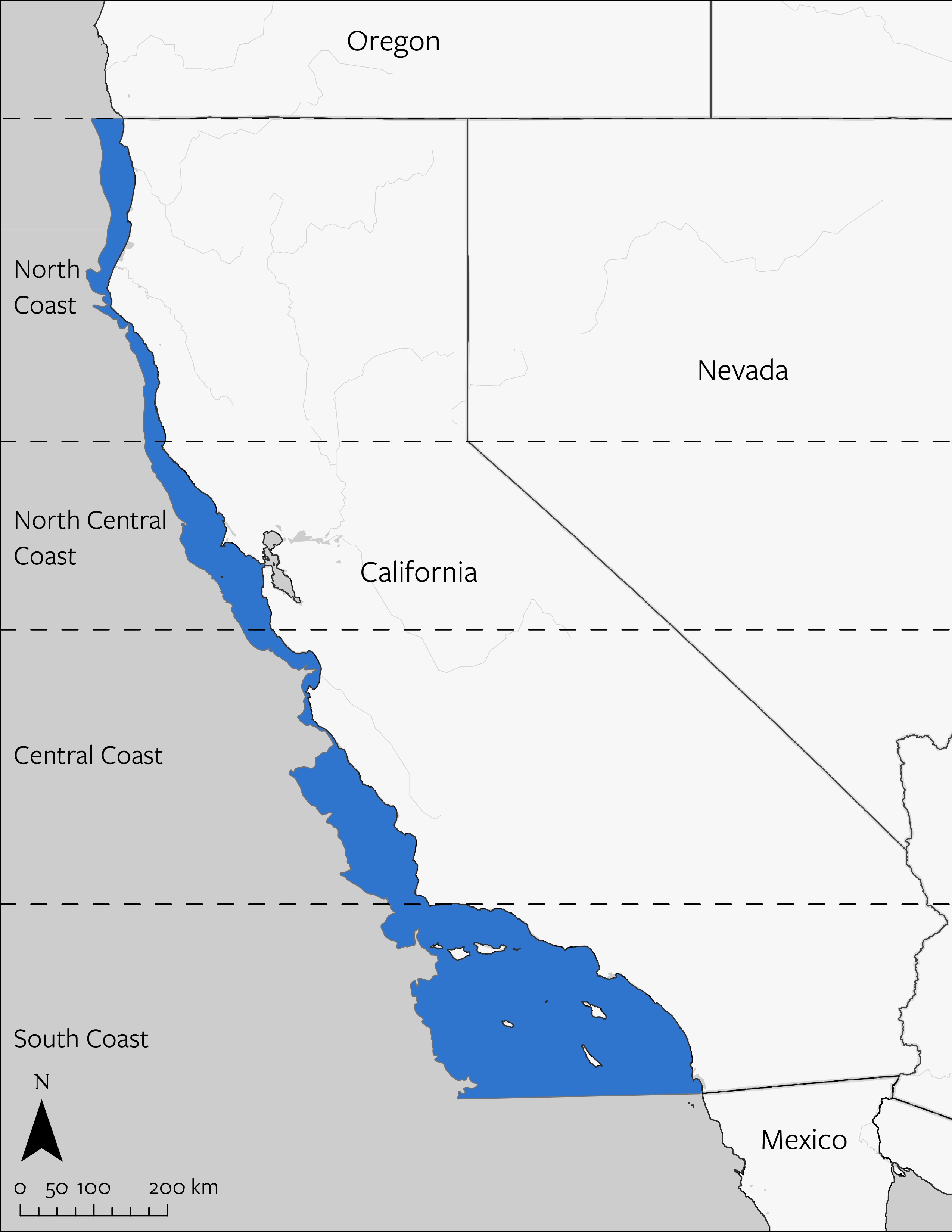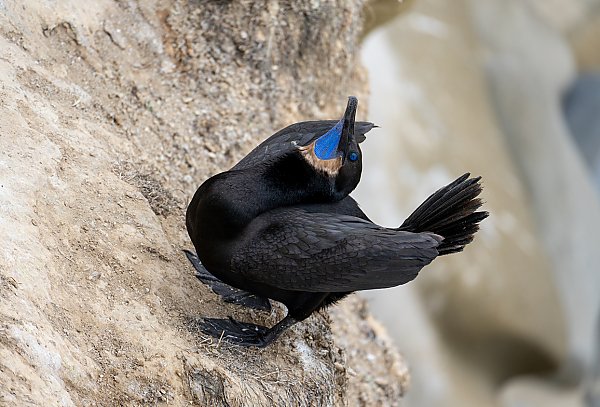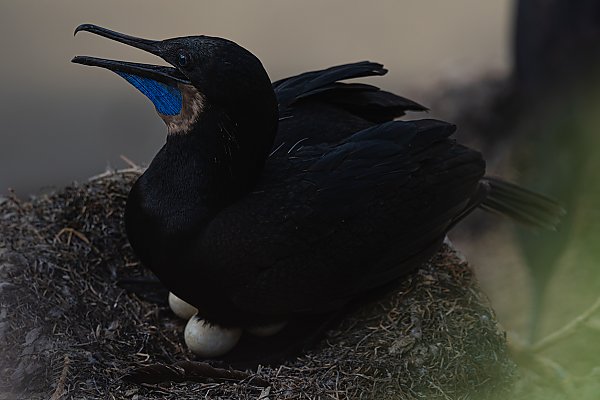Brandt’s Cormorant
Phalacrocorax penicillatus
Brandt’s Cormorant
Phalacrocorax penicillatus
Morphology
Adult Brandt’s cormorants are predominantly black with striking blue eyes. In the breeding season, a pouch beneath the throat (called a gular pouch) becomes distinctly blue and is used in courtship displays. They have a wingspan of over one meter and weigh approximately 2 kilograms. Juveniles display brown and gray plumage. Their beak is hooked for catching fish. They also have webbed feet for swimming underwater in pursuit of prey.
Habitat and Range
Brandt’s cormorant ranges along the west coast of North America from Alaska to Baja California, Mexico. The species is exclusively marine, inhabiting kelp bed areas, estuaries, coastal lagoons, and large bays. They forage close to the shore or well out to sea but are usually no more than 10 miles from land. Brandt’s cormorants are primarily permanent residents with some local movements to follow prey. Their ability to nest on rocky cliffs and offshore islands helps protect their colonies from land-based predators.
Range Map

Reproductive Biology and Life History
A highly social species, the Brandt’s cormorant nests and breeds in large colonies, sometimes including the common murre in California. Males select a nesting site on windward slopes of rocky islands, steep cliffs, and areas of boulders or on level ground. Each site is about three feet from the next but is fiercely defended with pecking, shoving, wing flapping, and threatening displays involving raised wings and snakelike head movements. To attract female cormorants, males will point their bills skyward and display their inflated blue throat pouches or spread their tails, flutter their wings, and thrust their heads forward and downward over their backs. Female cormorants will greet the males with displays including pointing their bills up, inflating their neck pouches, and grasping the male’s bill, which holds nesting material, and swaying with bills locked, slowly placing the material in the nest. A pair will typically mate and maintain their bond for only one season. The parents alternate incubating the eggs before the chicks are hatched, featherless and reliant on regurgitation. The age at first flight is unknown but they reach sexual maturity at two years old. Brandt’s cormorants typically live for about 9-12 years in the wild. However, some individuals have been known to live significantly longer.
Ecology
Brandt’s cormorants are adept divers, capable of reaching depths of up to 70 meters. They hunt a variety of fish and squid, often foraging in flocks that may include other seabirds and marine mammals like sea lions. Their diet includes over 93 species of fish, such as northern anchovy, Pacific herring, and various rockfish species. These seabirds show remarkable flexibility in their foraging behavior. Depending on prey availability, they can hunt near the surface or close to the bottom, and they often associate with other seabirds, marine mammals, and even sea lions when feeding, creating multi-species foraging assemblages.
Cultural Significance and Historical Context
After being described by a Russian biologist in 1838, Brandt’s cormorant has been widely recognized as one of the most important and abundant seabirds in California. The Channel Islands National Park and National Wildlife Refuges and ecological reserves along the California Coast offer a network of protected breeding sites for these seabirds. Unlike many other seabirds, there is no evidence that Brandt’s cormorants have ever been exploited for food or other resources.
Date modified: January 2025
Primary ThreatsPrimary Threats Conditions
Threats and Conservation Status
Brandt’s cormorant has a large population size and is not at risk of extinction. The biggest threats to the species are pesticide use, oil spills, the effects of climate change, and increased human development (such as coastal wind farms). Several major spills have killed significant numbers of Brandt’s cormorants, but the overall population has not been depleted.
While the population has undergone some extreme fluctuations, the trend observed when aggregating across major nesting colonies is stable with fluctuations (the slight positive trend explains less than 10% of the variation from year-to-year). Analyzing trends by regions as opposed to averaging the sites across all regions shows that in every region there is indication of either a stable population or an increasing population. The one region that stands out is the Central Coast region, which show’s an annual increase of 13%. However, the sites monitored in the central region generally had between 10 and 100 birds, which is an order of magnitude lower than the other regions. For this reason, the strong increase in the central region should not be given too much weight.
Several community science and local conservation efforts support Brandt’s cormorant monitoring and protection. The Seabird Protection Network stands out as a multi-organization collaborative that works to reduce human disturbance to seabirds, including Brandt’s cormorants, along the California Coast.
Population Plots





Data Source: Data from Point Blue Conservation Science, Naval Base Ventura County, ManTech, Inc., Farallon Institute, Morro Coast Audubon.



